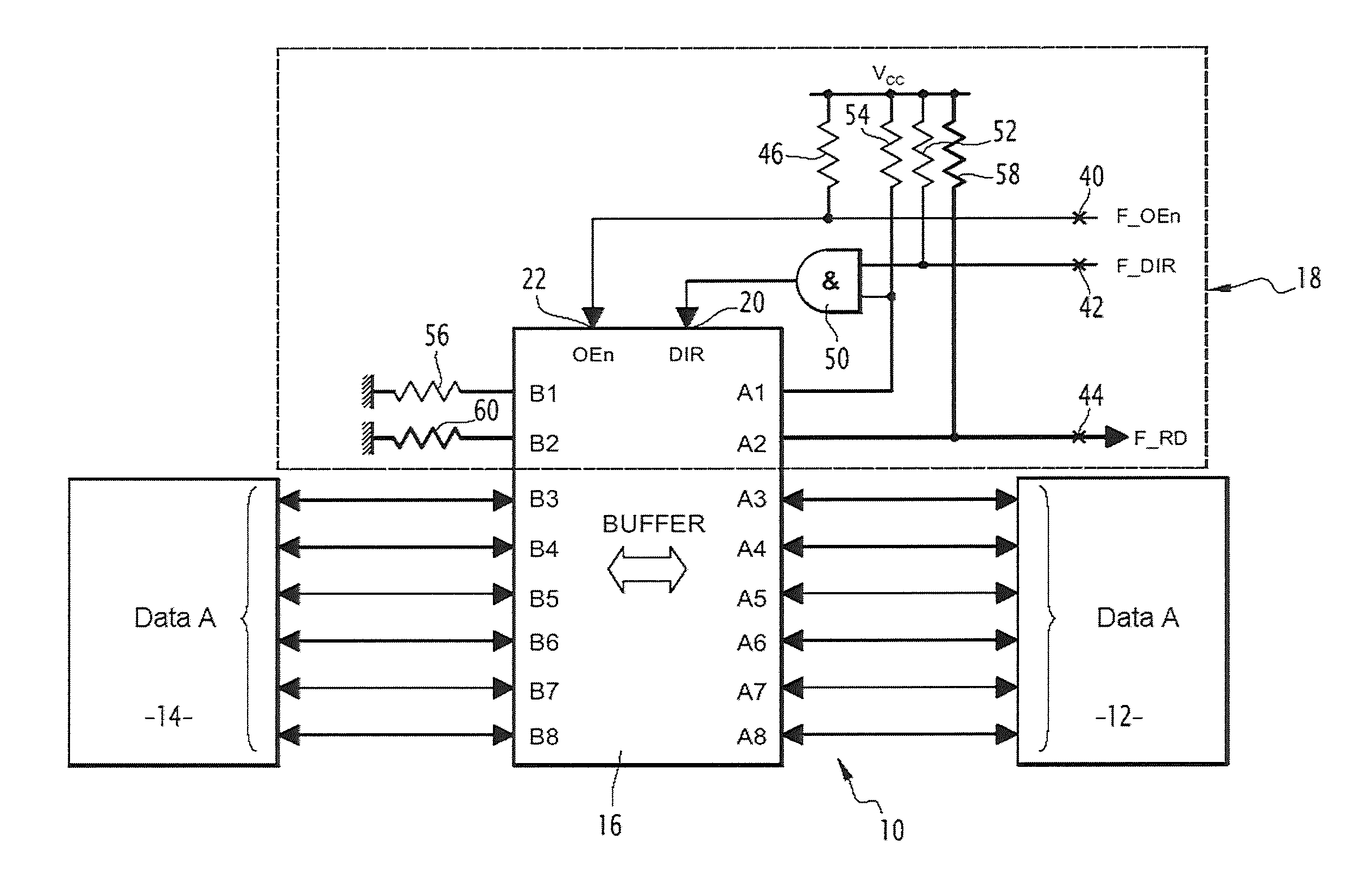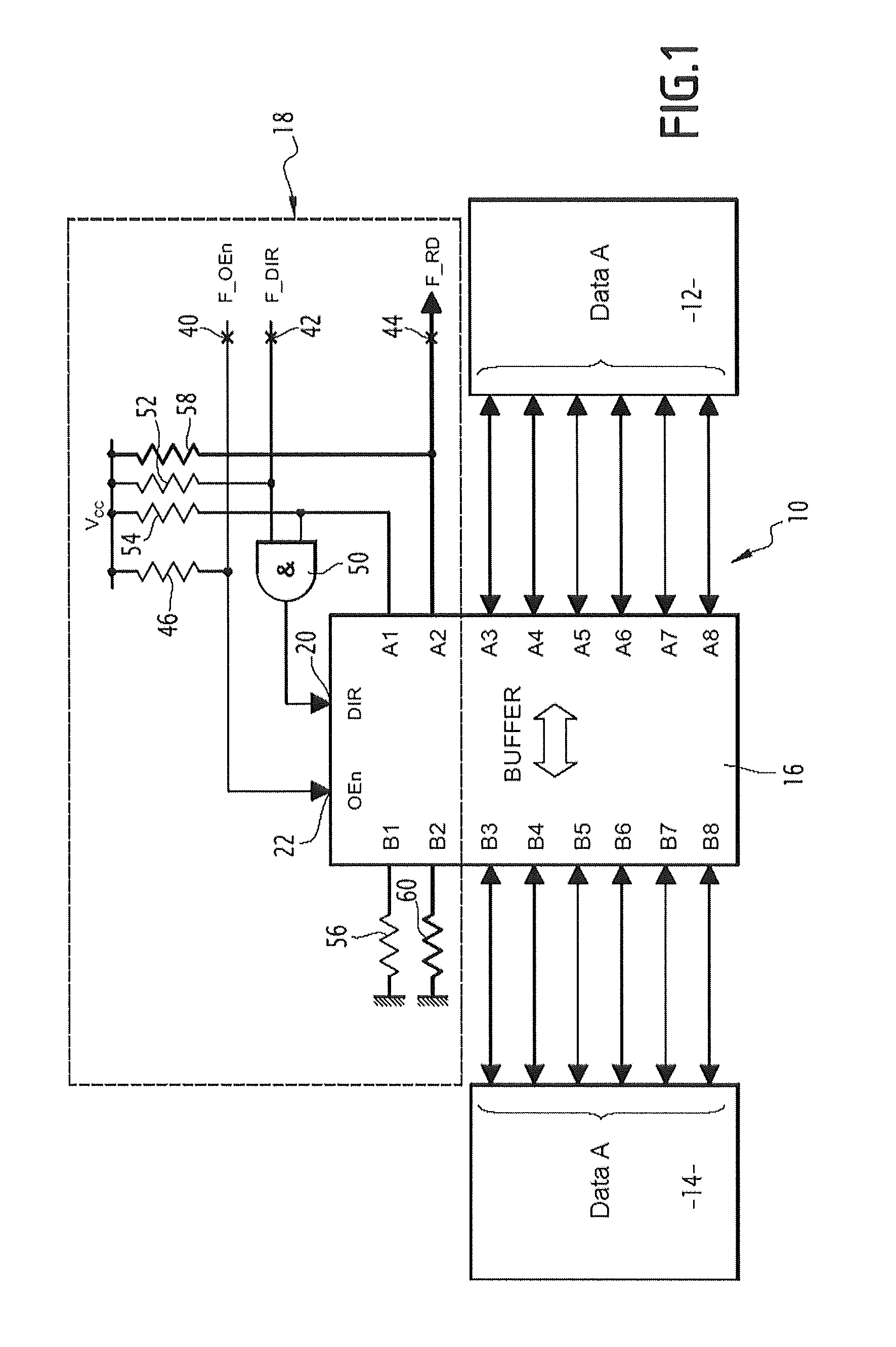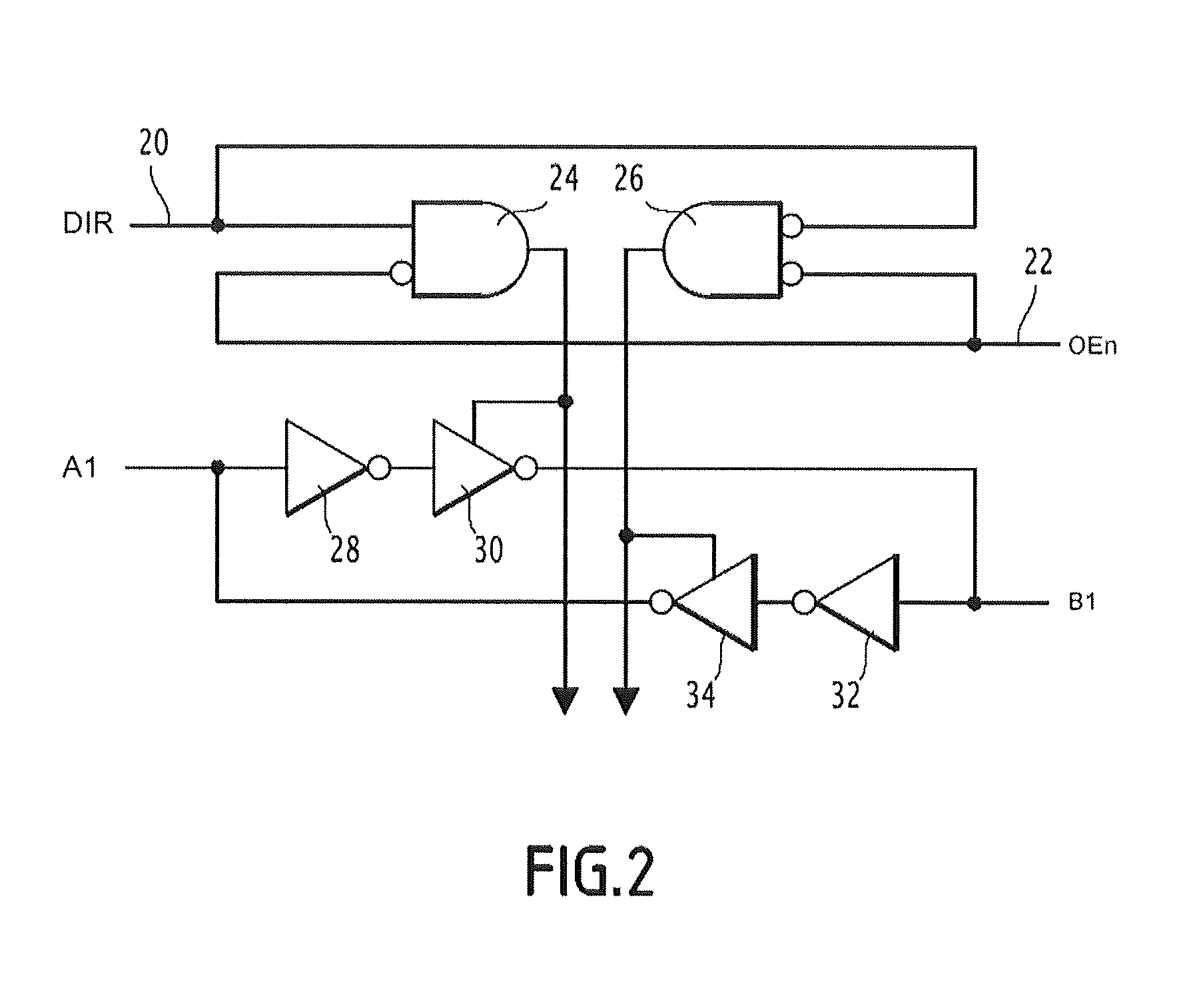Bidirectional data exchange circuit
a data exchange circuit and bidirectional technology, applied in logic circuits, electronic switching, pulse techniques, etc., can solve the problems of affecting the function safety, affecting the control of the direction signal for the buffer directly by a programmable component, and requiring a tedious manual operation
- Summary
- Abstract
- Description
- Claims
- Application Information
AI Technical Summary
Benefits of technology
Problems solved by technology
Method used
Image
Examples
Embodiment Construction
[0034]The bidirectional data exchange circuit 10 illustrated in FIG. 1 is for example applied between a processor 12 and a memory 14, and more generally between two electronic devices having to exchange data.
[0035]The exchange circuit 10 is able to allow, during a single initial phase, the transfer of data from the processor 12 towards the memory 14 and then after this initial transfer to only allow in future transfer of the data from the memory 14 note to the processor 12, without the processor being able to again write into the memory.
[0036]The circuit 10 includes a buffer or buffer memory 16. It further includes a circuit 18 for controlling the transfer direction of the data in the buffer 16.
[0037]This control module 18 only includes discrete passive elements, such as AND or OR logic gates and resistors.
[0038]The buffer 16 includes, as this is known per se, two sets of two-by-two matched terminals per route allowing transfer of data from one terminal of a set to another matched t...
PUM
 Login to View More
Login to View More Abstract
Description
Claims
Application Information
 Login to View More
Login to View More - R&D
- Intellectual Property
- Life Sciences
- Materials
- Tech Scout
- Unparalleled Data Quality
- Higher Quality Content
- 60% Fewer Hallucinations
Browse by: Latest US Patents, China's latest patents, Technical Efficacy Thesaurus, Application Domain, Technology Topic, Popular Technical Reports.
© 2025 PatSnap. All rights reserved.Legal|Privacy policy|Modern Slavery Act Transparency Statement|Sitemap|About US| Contact US: help@patsnap.com



